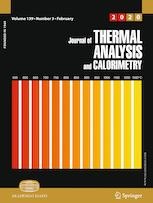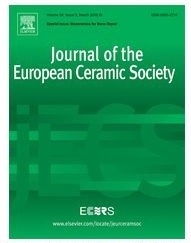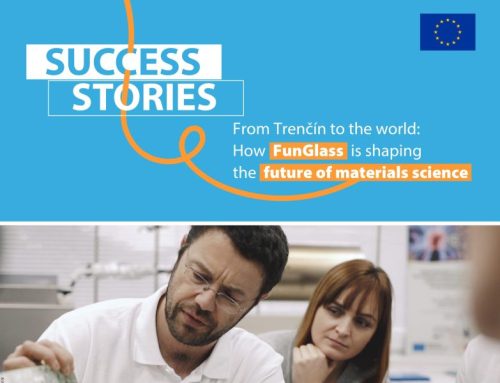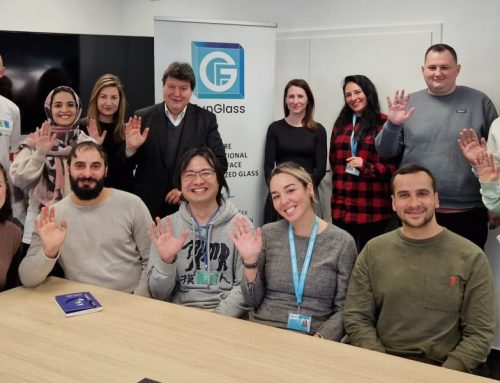New papers published at FunGlass
We would like to draw your attention to the new papers of our researchers presenting their research results achieved in collaboration with the colleagues from FunGlass partners´ institutions. The papers are published in peer-reviewed and highly cited journals:
 Branislav Hruška- Rajesh Dagupati- Mária Chromčíková- Aleksandra Nowicka- Jaroslava Michálková- Jacob A. Peterson- Marek Liška- Francisco Munoz: Structure and Raman spectra of binary barium phosphate glasses. In: Journal of Thermal Analysis and Calorimetry (2020). https://doi.org/10.1007/s10973-020-09328-0
Branislav Hruška- Rajesh Dagupati- Mária Chromčíková- Aleksandra Nowicka- Jaroslava Michálková- Jacob A. Peterson- Marek Liška- Francisco Munoz: Structure and Raman spectra of binary barium phosphate glasses. In: Journal of Thermal Analysis and Calorimetry (2020). https://doi.org/10.1007/s10973-020-09328-0
Abstract: The structure of xBaO·(1 − x) P2O5 (x = 0.30, 0.35, 0.40, 0.45, and 0.50) glasses was studied by Raman spectroscopy and thermodynamic model Shakhmatkin and Vedishcheva (SVTDM). The seven system components (defined as stable crystalline phases of the BaO–P2O5 binary phase diagram) were considered in the SVTDM: BaO, P2O5, 4BaO·P2O5 (B4P), 3BaO·P2O5 (B3P), 2BaO·P2O5 (B2P), BaO·P2O5 (BP), and BaO·2 P2O5 (BP2). Only the equilibrium molar abundances of BP and BP2 were non-negligible in all studied glass compositions. Therefore, in the next step, multivariate curve analysis (MCR) of the baseline—subtracted, thermally—corrected experimental Raman spectra, was performed for two components (BP2 and BP). MCR resulted in the Raman spectra (loadings) and relative abundances (scores) of each considered component. The MCR method reproduced 98.93% of the spectral data variance. Then, the decomposition of Malfait was used. The perfect fit between the MCR loadings and the partial Raman spectra of BP2 and BP, obtained by Malfait’s decomposition, was found, confirming the validity of thermodynamic model.
 Arish Dasan- Hamada Elsayed- JozefKraxner- DušanGalusek- PaoloColombo- EnricoBernardo: Engineering of silicone-based mixtures for the digital light processing of Åkermanite scaffolds. In: Journal of the European Ceramic Society. Volume 40, Issue 7, July 2020, p. 2566-2572. https://doi.org/10.1016/j.jeurceramsoc.2019.11.087
Arish Dasan- Hamada Elsayed- JozefKraxner- DušanGalusek- PaoloColombo- EnricoBernardo: Engineering of silicone-based mixtures for the digital light processing of Åkermanite scaffolds. In: Journal of the European Ceramic Society. Volume 40, Issue 7, July 2020, p. 2566-2572. https://doi.org/10.1016/j.jeurceramsoc.2019.11.087
Abstract: Silicones mixed with oxide fillers are interesting precursors for several bioactive glass-ceramics. A key point is represented by the coupling of synthesis and shaping, since highly porous bodies, in form of foams or scaffolds, are first manufactured with silicones in the polymeric state, at low temperature, and later subjected to ceramic transformation. After successful application of direct ink writing, the present study illustrates the tuning of silicone-based mixtures in order to form åkermanite (Ca2MgSi2O7) reticulated scaffolds by digital light processing. This implied the selection of commercial silicones, producing stable and homogeneous blends with a photocurable resin and enabling the manufacturing of defect-free printed scaffolds, before and after firing, without fillers. The blends were further refined with the introduction of fillers, followed by firing at 1100 °C, in air. Optimized samples (from H44 resin) and reactive fillers (including up to 4.5 wt.% borax additive), led to crack-free and phase-pure scaffolds with microporous struts.












